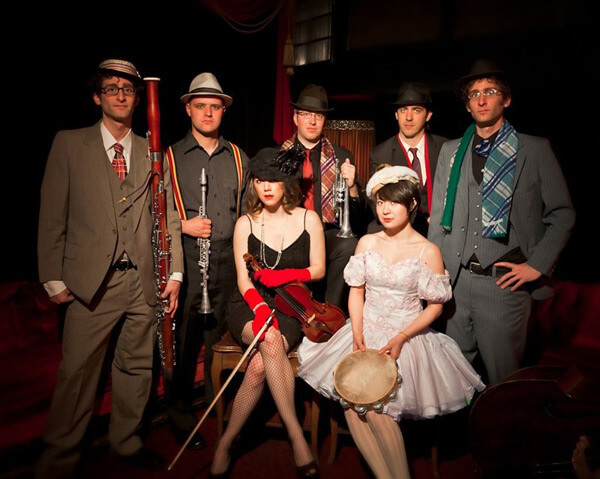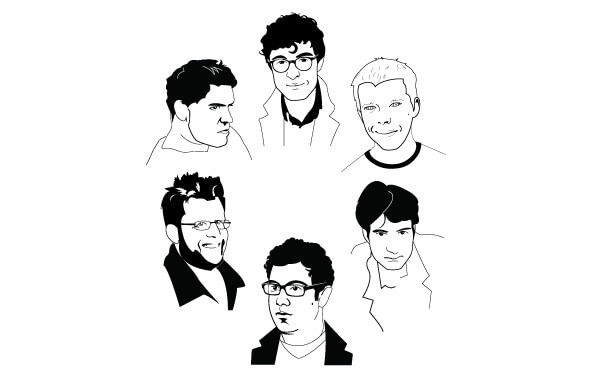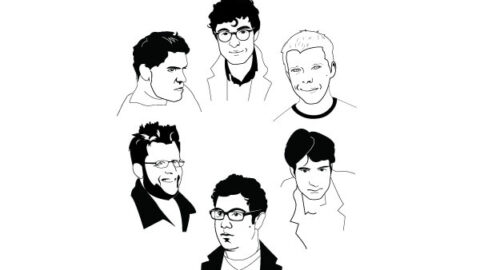 Igor Stravinsky once said that “A good composer does not imitate; he steals.” In Histories, a new piece by Brooklyn-based composer collective Sleeping Giant and commissioned by the Deviant Septet ensemble, they do just that, stealing from the bad boy of music himself in what becomes a revisionist and exhilarating look at history, artistic influence, remix culture, and the process of creation.
Igor Stravinsky once said that “A good composer does not imitate; he steals.” In Histories, a new piece by Brooklyn-based composer collective Sleeping Giant and commissioned by the Deviant Septet ensemble, they do just that, stealing from the bad boy of music himself in what becomes a revisionist and exhilarating look at history, artistic influence, remix culture, and the process of creation.
On May 24, Deviant Septet and Sleeping Giant joined to present Histories at Brooklyn’s Issue Project Room. Deviant Septet is an ensemble of musicians that came together to fulfill Stravinsky’s unique vision of instruments needed for his L’histoire du Soldat ensemble. L’histoire du soldat, or The Soldier’s Tale, was a theatrical work based on a Russian folk tale composed by Stravinsky and initially performed in 1918. Scored for a septet of double bass, clarinet, bassoon, cornet or trumpet, trombone and percussion, Stravinsky had imagined that this combination of instruments would grow in influence and scope. Deviant Septet’s mission is to not only realize Stravinsky’s unfulfilled dream, but to extend his vision, commissioning avant-garde and unique works to add a spark of the unusual to modern chamber music. Sleeping Giant consists of six emerging composers (all Yale School of Music Graduates: Timo Andres, Ted Hearne, Jacob Cooper, Christopher Cerrone, Andrew Norman, and Robert Honstein) who, similarly to Deviant Septet, are unafraid to shake things up a bit in the contemporary classical world, and are drawn to one another based upon mutual respect of their unique compositional voices.

In their first-ever collaboration, Deviant Septet asked Sleeping Giant to create a companion piece to Stravinsky’s L’histoire. Sleeping Giant chose to not only borrow from Stravinsky, but also from one another, creating a multilayered and remixed experience with a nod to the meta anarchistic revisionist in us all. In Agitated, Stumbling, and Like an Endless Run-on Sentence, a percussion solo from L’histoire was borrowed as the starting point and reinterpreted for each instrument. In Marionette, only two single beats were taken as the foundation for the piece. Many of the shorter movements were admittedly somewhat bombastic and brash, full of explosive and surprising movements not unlike an unruly teenager trying to one-up his equally tempestuous grandfather at a family meal.
Highlights of the performance included both Revisionist History and Recovering. In Recovering the clarinet, bassoon, trumpet and trombone players were sent to all four corners of the room, surrounding the audience in a piece that began with only the staggered and rhythmic sounds of the breadth of the four musicians. A highly immersive and intimate experience, it felt akin to lying in bed with loved ones near you. By the time the vibraphone and strings entered the composition you were already transported to a place profoundly human and remained there throughout to the final, almost violent exhale. In Revisionist History, Sleeping Giant experimented with “correcting” a “faux-sombre chorale” taken from L’histoire by injecting and experimenting with various new and borrowed quotes from other works, finally resolving the piece by quoting not Stravinsky, but Recovering, thereby “intentially revers[ing] the process of artistic influence.”

Histories concluded with the final movement of Rando III (Coda) which featured a spirited, dare I say almost possessed performance of guest artist Andrew Roitstein on the double bass that had the audience alternately startled and giggling from his virtuoso, comical, and daring interpretations.
Histories presented an opportunity for not only beautiful and uncompromising musical inventions, but it also incited a conversation about perceived limits of artistic influence and creation. It highlighted how a process of continual discovery, a readiness to challenge perceived notions of authorship and interpretation, and a remixing of the old with the new, is definitely so much more than just a fleeting bad-boy experimental heist, but can, in fact, create vital and expansive works.
—
Adrianne Koteen is a New York City based artist and educator. Follow her on twitter @akoteen.
























